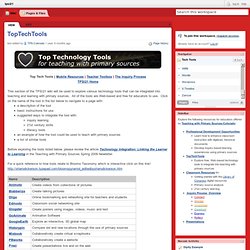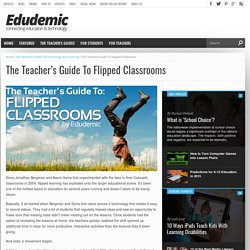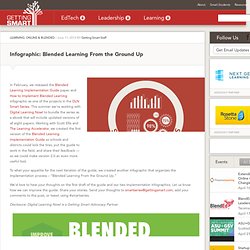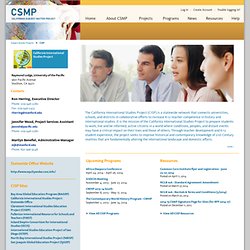

Tpsi21 / TopTechTools. Top Tech Tools | Mobile Resources | Teacher Toolbox | The Inquiry Process TPSI21 Home This section of the TPSI21 wiki will be used to explore various technology tools that can be integrated into teaching and learning with primary sources.

All of the tools are Web-based and free for educators to use. Click on the name of the tool in the list below to navigate to a page with: a description of the toolbasic instructions for usesuggested ways to integrate the tool with: inquiry learning21st century skillsliteracy toolsan example of how the tool could be used to teach with primary sourcesa list of similar tools Before exploring the tools listed below, please review the article Technology Integration: Linking the Learner to Learning in the Teaching with Primary Sources Spring 2009 Newletter.
For a quick reference to how tools relate to Blooms Taxonomy which is interactive click on this link! Other helpful tools: Search Engines and Other Cool Tools. Apps for Bloom's Taxonomy. Course-builder - Course Builder. Psychologists Identify the Best Ways to Study. Education generally focuses on what you study, such as algebra, the elements of the periodic table or how to conjugate verbs.

But learning how to study can be just as important, with lifelong benefits. It can teach you to pick up knowledge faster and more efficiently and allow you to retain information for years rather than days. Cognitive and educational psychologists have developed and evaluated numerous techniques, ranging from rereading to summarizing to self-testing, for more than 100 years. Some common strategies markedly improve student achievement, whereas others are time-consuming and ineffective. Stanford History Education Group. The Teacher's Guide To Flipped Classrooms. Since Jonathan Bergman and Aaron Sams first experimented with the idea in their Colorado classrooms in 2004, flipped learning has exploded onto the larger educational scene.

It’s been one of the hottest topics in education for several years running and doesn’t seem to be losing steam. Basically, it all started when Bergman and Sams first came across a technology that makes it easy to record videos. They had a lot of students that regularly missed class and saw an opportunity to make sure that missing class didn’t mean missing out on the lessons. Once students had the option of reviewing the lessons at home, the teachers quickly realized the shift opened up additional time in class for more productive, interactive activities than the lectures they’d been giving. 13 Free Web Tools Students and Teachers Should Know About — CSCampus Inc.
Share Doc with Your Teacher- Teacher Version. Anthony's Copy of Google Apps for Education: Deployment Guide. Web 2.0 Tools For Common Core. New Handy Chart on The Difference Between Projects and Project-based Learning. We Don't Like "Projects" The Techie Teacher. Teachers as Technology Trailblazers. Free Technology for Teachers. Educational Technology and Mobile Learning.
K12 educational transformation through technology. Common Core: Reading, Understanding & Analyzing Complex Texts. *ISTE Workshop: Transitioning to the Common Core with Google Apps – Join me!

In my previous post “Common Core: What is a ‘complex text’ anyway?” I wrote about the three aspects of a text that the Common Core measures to determine its “complexity,” which include: 1) quantitative, 2) qualitative, 3) reader and task. Hopefully, that post helped to clarify how we as educators can evaluate the complexity of a text we are using with our students. This blog will focus on ways we can support students in reading, understanding and analyzing those texts. The individual standards for each grade level vary and the standards themselves act like a staircase. . * Reading Literature Standards. Deeper Project Based Learning - Vander Ark on Innovation. Infographic: Blended Learning From the Ground Up. In February, we released the Blended Learning Implementation Guide paper and How to Implement Blended Learning infographic as one of the projects in the DLN Smart Series.

This summer we’re working with Digital Learning Now! To bundle the series as a ebook that will include updated versions of all eight papers. Storytelling. Exploring YouTube's education channels. Teachers are posting their lessons online in fun educational videos that draw-in tech-savvy kids who love multimedia.

NBC's Stephanie Gosk reports. YouTube is usually associated with the latest viral video, but now growing numbers of people are turning to the video-sharing website for education instead of entertainment. Teachers are broadcasting lessons online, everything from biology to foreign languages -- and for some, this online "classroom" is more inspiring than the confines of brick and mortar. Below, check out some of the most popular channels on YouTube EDU.
The five most powerful ways teachers aren’t using Google Drive (yet) Google Drive—formerly named Google Docs—is Google’s online productivity suite.

It’s long been a popular choice for collaborative writing and editing of documents, especially among teachers and students, so I won’t dwell on the excellent collaboration features others have written about at length for years. More recently, Google added cloud storage space similar to what Dropbox offers. If you use any of Google’s products like Gmail or Calendar, you already have access to at least 15 GB of file storage space on Google Drive.
This new addition dramatically changes the ways in which you can interact with Google Drive. Project Search. The 12 Must-Have Skills Of Modern Learners. If you consider yourself a modern learner and take advantage of modern technology in order to improve yourself, then you probably have some or most of these characteristics.

If you use technology to bolster your understanding of a particular topic, use critical thinking and problem-solving skills to tackle tough questions, or simply collaborate across networks (online and in-person), then you’ve got some of the skills of modern learners. That’s the idea behind this fabulous visualization from User-Generated Education . Getting Ready for Common Core: A Playbook for K-12 School Districts. Teachinghistory.org. CSMP - California International Studies Project. The California International Studies Project (CISP) is a statewide network that connects universities, schools, and districts in collaborative efforts to increase K-12 teacher competence in history and international studies.

It is the mission of the California International Studies Project to prepare students to work, live and be informed, active citizens in a world where conditions, peoples, and distant events may have a critical impact on their lives and those of others. Through teacher development and K-12 student experience, the project seeks to improve historical and contemporary knowledge of 21st Century realities that are fundamentally altering the international landscape and domestic affairs. Current CISP Advisory Board Members California State University: Dr. Richard Shek, Sacramento State Professor, Humanities and Religious Studies University of California: Dr.
Governor’s Office: Carol Mink, Former Staff Member for Tom Lantos and High School History Teacher (retired) 10 Excellent Resources to Help you Align your Teaching with Common Core Standards. There is now a heated discussion going on in the States about the Common Core Standards.

Everything has been reshaped to meet the requirements of Common Core Standards including technology integration at least in the 46 states that have already adopted it. 10 Podcasting Projects Every Teacher Should Try. We Don't Like "Projects" Explain Everything X 4 Ways. When it comes to flexible iPad apps, nothing quite fits the bill like Explain Everything. Developed as a screencasting app (in my opinion, the best in the app store), I have recently found that I am using the app for anything but screencasting. Create Your Free Website. 25 Ways To Use Pinterest With Bloom's Taxonomy ... India's Premier Education Technology Community. The 5 Best tools for checking Plagiarism — CSCampus Inc.
There are many tools available on the internet from where you can easily detect Plagiarism and/or duplicate content. In this post we'll see 5 of the best tools, which can help you to easily detect plagiarism or duplicate content. 1. Copyscape Copyscape is ranked no. 1 in the world and it is the most popular online plagiarism detector. Here, you can check the duplicate content by inserting the URL into the search box. 2. List of Free Tools to Create Infographics for your Learners. TimeRime.com - Homepage.
The free and safe social learning platform for education. Edcanvas. Education Technology Tips For Students And Teachers. Integrate iPads Into Bloom's Digital Taxonomy With This 'Padagogy Wheel' You’re going to want to turn on your printer and fire up a PDF viewer. This is just that good. It’s called the Padagogy Wheel and it offers a fantastically useful perspecitve on how to figure out which iPad apps work with Bloom’s Digital Taxonomy. Created by Allan Carrington, this thing is a monster and deserves some focused attention. So I’d make a personal plea to save the hi-res image (below) or print out the PDF (available here) and then spend your long weekend closely examining this thing.
The Padagogy Wheel takes an expanded approach Bloom’s Digital Taxonomy and offers 62 iPad apps that fit into the organized chaos that is Bloom’s. Loremipsem. PBS LearningMedia. Teacher's Guide to Using Shared Google Docs with Students. Sharing is caring and one of the powerful features of Google Docs is sharing.As we have seen in 8 Things Every Teacher should be Able to Do with Google Docs , users can easily share documents, presentations, tables, graphs, and spreadsheets by simply changing the visibility options in the sharing settings of Google Docs.
But what if you want to aggregate all your docs in one document and share it with others ( probably your student) ? Shared Google Docs has the answer answer for you. Resources for Schools. Eye-Catching Views of Population. Free Technology for Teachers. Home. How Has The Internet Changed Education? User Rating: School. Technology in Education. 'common core history' By CCCOE. Social Studies Resources. Edmodo. Flipped Classrooom Resources. Free History Learning Materials. Web Resources. Ed tech. Killer Infographics.